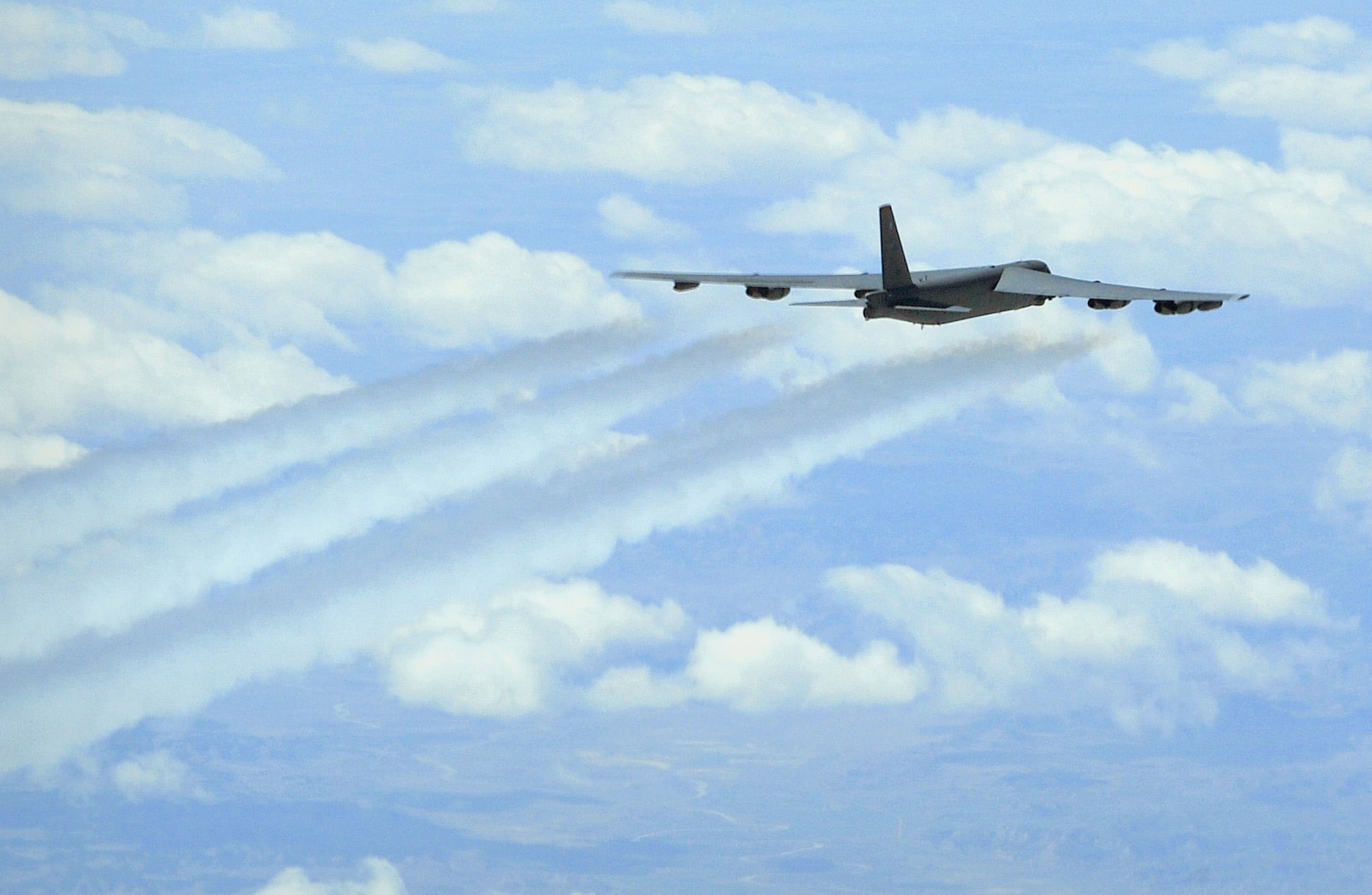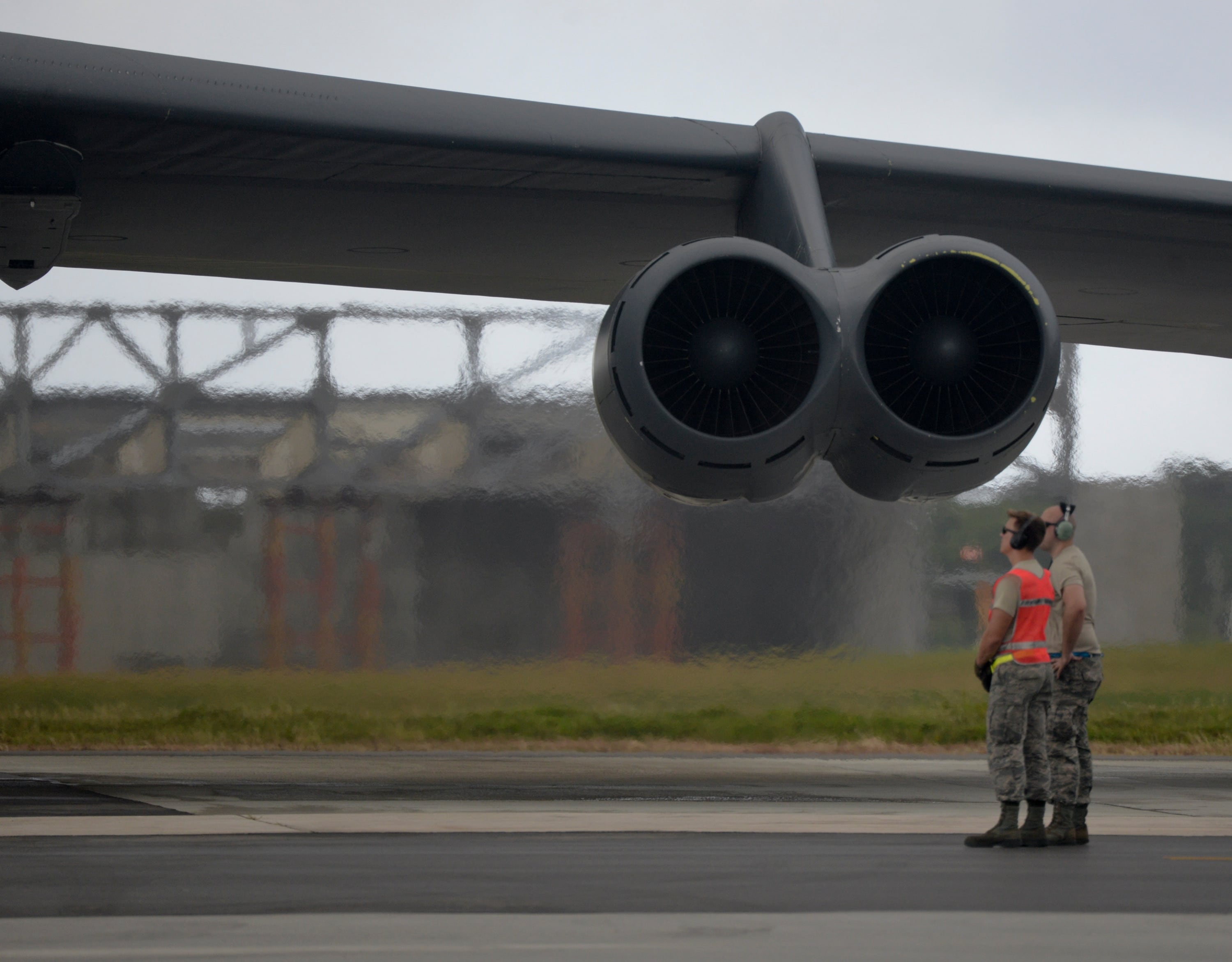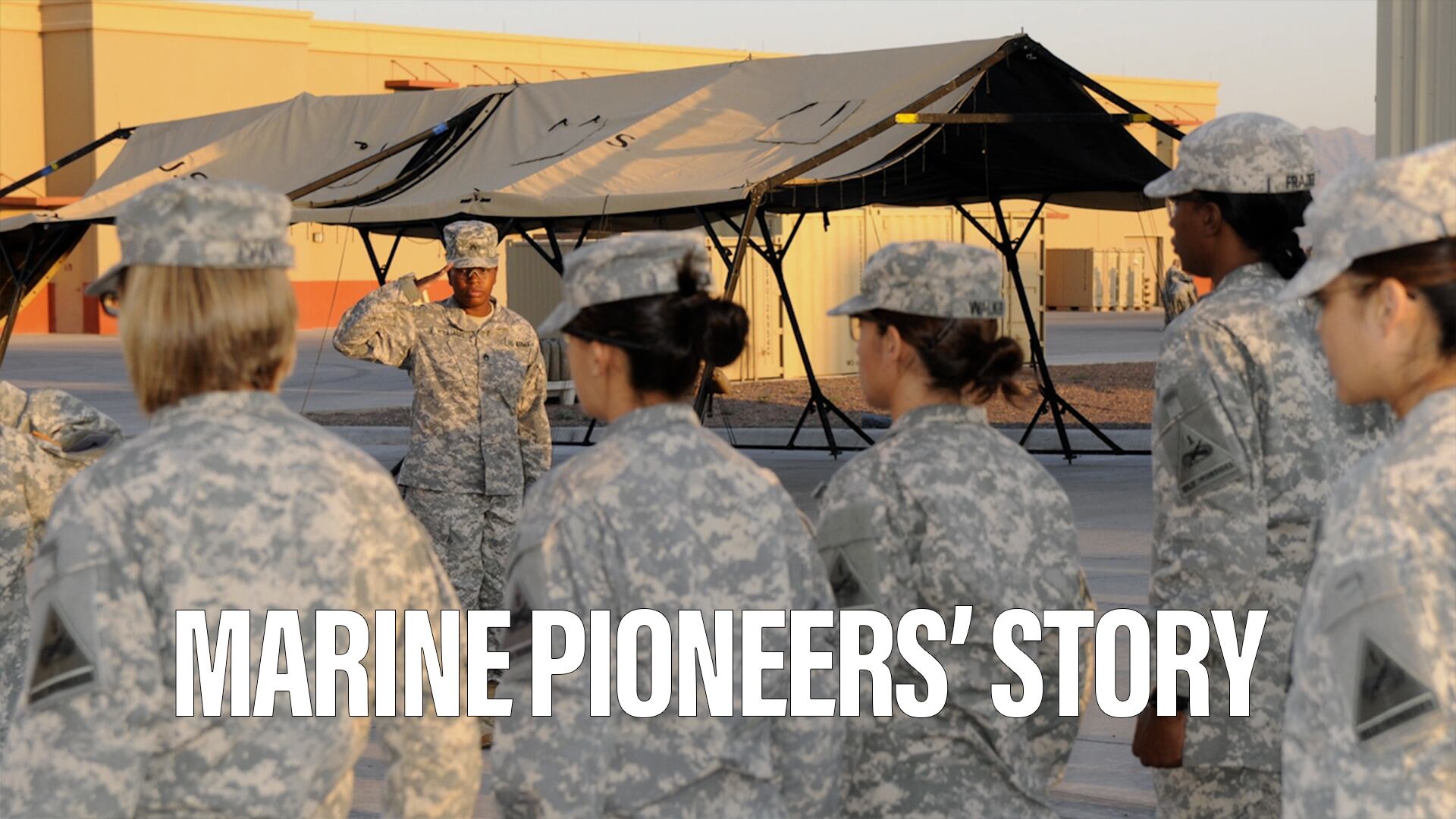WASHINGTON — Rolls-Royce has a pitch for the U.S. Air Force: Pick the BR725 — a variant of the F130 that powers the E-11 and C-37 aircraft — to replace the B-52’s aging engines, and the company will set up a new F130 final assembly and testing to the United States.
“The F130 family of engines that we’re proposing for the propulsion modernization is already a mostly U.S.-made product, and we’re going to take the final step in bringing the assembly and test of that to the U.S., should this program go forward,” Tom Hartmann, Rolls-Royce’s senior vice president of customer business, said during a Sept. 14 briefing with reporters.
All things considered, the company's announcement is a little premature. The Air Force still has not decided whether to pursue a program of record for replacing the Pratt & Whitney TF33-P-3/103 engines, eight of which are used to power one Boeing B-52 Stratofortress. However, industry remains hopeful that a program will move forward.
Rolls-Royce is the first engine manufacturer to announce its offering for B-52 engine modernization; however, media had speculated that it would likely choose one of the engines in its BR-700 family, which is called F130 in military parlance.
The U.K.-based company has not decided where it would move F130 assembly, but Hartmann denied that the “America First” policies of President Donald Trump played into the decision.
“We have invested heavily in America over the last 10 years,” he said. “In fact, recently here at the Indianapolis site we put in $600 million to modernize our facilities, but we have people in 27 states and are looking at all possible and sensible options for assembly and test of the engine.”
After the briefing, a Rolls-Royce spokesman clarified that the commercial BR700 family of engines, including the BR725, will continue to be produced in Germany.
RELATED

For years, the Air Force has deliberated whether to replace the TF33s with new propulsion systems, but those efforts were reinvigorated in January when an engine dropped from a B-52 conducting training over North Dakota.
Although the Air Force has still not announced a definite root cause, officials such as Gen. Robin Rand, head of Air Force Global Strike Command, have categorized the mishap as a catastrophic engine failure that resulted in the protected casing around the TF33 degrading, leading to the engine detaching from the plane altogether.
Hartmann said he could not speculate on when the Air Force would make a decision to greenlight a program. However, he sees repeated dialogue with industry as a sign of positive momentum and expects to see further requests for information from the service.
RELATED

“We believe the Air Force wants to keep the B-52 affordable and relevant for a long time to come, probably another 30 years or so, through 2050,” he said. “They’re already investing in the aircraft. Most of the major systems except for the engines have had modernization. Weapons, radars, comms are in the process of being upgraded.”
The biggest barrier to replacing the TF33 is the Air Force’s crowded budget, which leaves little room for an engine modernization program, which Rand previously told Defense News could cost $5 billion to $7 billion.
However, proponents of modernization have said buying new engines would save the service $10 billion if the B-52’s life goes until 2050. Additionally, upgrading the Stratofortress’ engine would increase its range and lower fuel consumption.
The Air Force has also investigated alternative financing options, such as entering into a private-public partnership with industry. Hartmann said Rolls-Royce had provided the service with several different leasing options for the BR725 engine.
If a program of record is approved, Rolls-Royce will likely have to compete against the other manufacturers of military engines.
Pratt & Whitney has maintained that the most cost-efficient option is to upgrade the existing TF33 systems. General Electric has not specified what engine it could offer, but Richard Aboulafia, an analyst with the Teal Group, said the TF34 could be a formidable competitor.
Hartman estimates the service could buy as many as 650 engines total.
Valerie Insinna is Defense News' air warfare reporter. She previously worked the Navy/congressional beats for Defense Daily, which followed almost three years as a staff writer for National Defense Magazine. Prior to that, she worked as an editorial assistant for the Tokyo Shimbun’s Washington bureau.








